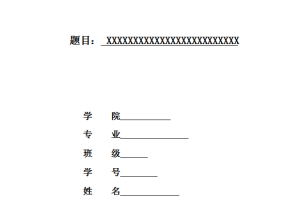Abstract
Recent years, the foreign language teaching specially emphasizes the importance of stimulating students’ learning interest. It put great emphasis on making the students learn in the relaxed atmosphere, and people pay more and more attention to the English education environment, especially the primary English teaching is getting more and more important with the increasing attention of society. Primary English Teaching Syllabus points out that interest is the key of learning a language well and it is an important task to stimulate students’ learning interest in the primary stage. Therefore, English teaching should give up the traditional educational model, and explore a set model to suit the pupils’ development that combines children’s psychological and physiological feature.
This thesis aims to illustrate the effect of Total Physical Response teaching approach on primary school students’ interest in English. It explains the theoretical basis of TPR and analyzes the advantage and function of TPR in primary English teaching. It also discusses the concrete training in stimulating and improving pupils’ English learning interest combining with some activities.
Key words: Total Physical Response learning interest
primary English teaching
摘 要
近些年,外语教学理论界特别强调把激发学生的学习兴趣放在重要位置,强调要让学生在轻松愉快的气氛中学习外语,英语教育环境越来越受到人们的关注,特别是小学英语教学受到社会越来越多的关注并变得日益重要。《小学英语课程标准》指出,兴趣是学好语言的关键,激发学生学习英语的兴趣是小学阶段英语教学的一项重要任务。因此英语教学要注意结合儿童的心理和生理特点,小学英语教学应摒弃传统教学模式,要以激发学生学习兴趣为出发点,探索一套适合小学生生理,心理特点及认知发展水平的模式。
本文旨在通过对全身反应法使小学生英语学习兴趣提升的研究,阐述了全身反应法的理论基础,分析了全身反应法在小学英语课堂教学中的优势和作用,并且结合一些活动探讨了关于激发及提高小学生英语学习兴趣方面的具体操练。
关键词:全身反应法 学习兴趣 小学英语教学
Contents
Acknowledgements……………………………………………………..……………i
Abstract(English)………………………………………………..……………………ii
Abstract(Chinese)……………………………………………………..……………..iii
Contents……………………………………………………………..………………..iv
1 Introduction………………………………………………………….…………….1
2 Theoretical background……………………..……………………..….….…………3
2.1 Studies of interest in foreign language learning…………………………………3
2.1.1 Interest and learning……………………..……………………………………3
2.1.2 Motivation and learning………………………………………………….4
2.2 The psychological features of primary school pupils ………………..………..5
2.2.1 The characteristics of children…………………………………………..5
2.2.2 Features of children’s attention……………………………………………..6
3 English teaching through Total Physical Response………………….……………..7
3.1 The definition of TPR…………………………………………….….…………..8
3.2 Advantage of using TPR ……………………….…………………..…………….8
3.3 The design of TPR………………………………………………..…………….12
3.3.1 Objective……………………………………………………………….12
3.3.2 Types of learning and teaching activities……………………………….12
3.3.3 Learner roles……………………………………………………………13
3.3.4 Teacher roles……………………………………………………………14
3.3.5 The roles of instructional material……………………………………..15
3.4 The process of designing the teaching approach of TPR………….………….16
3.5 When to use TPR……………………………………………………….……18
4 Practical applications…………………………………………..………………….20
4.1 Teaching target…………………………..……………………………..…….20
4.2 The main teaching activities and design………………..……..……….……..21
5 Conclusion……………………………………………………………….……….26
References………………………………………………………………..……………28





